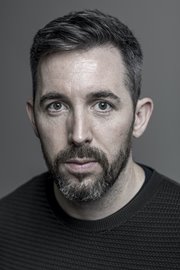for The New York Times
20 October, 2019
Ahmed Ibrahim (18), an SDF fighter badly burned in conflict with Turkish forces, is visited by his girlfriend at a hospital in Al-Hasakah, on 20 October. She had at first been unable to enter the room, as she was horrified by his injuries, but a nurse encouraged her to go in to hold Ahmed’s hand and have a short conversation.
By early 2019, the territory held by the Islamic State group (IS) in Syria had reduced to a four-square-kilometer patch in the southeast, centered on the village of Baghuz. The IS retreat from northern Syria took place under the onslaught of the combined militias of the Syrian Democratic Forces (SDF), led by the Kurdish People’s Protection Units (YPG) and supported by an international coalition of primarily US troops. As IS drew back, tens of thousands of people emerged from the enclave, many of them the wives and children of foreign IS fighters. Numerous IS fighters themselves surrendered or were captured. The Kurds were left with the conundrum of what to do with so many prisoners, many of them under 18 and orphaned or separated from their families. Then, at the beginning of October, US president Donald Trump ordered US troops out of northern Syria. On 9 October, Turkey—which regarded Kurdish forces on its border as a security threat, given the decades-long Kurdish insurgency against Turkey—invaded northern Syria, aiming to end Kurdish control over the territory. As Kurdish forces refocused their attention on a new opponent, the fate of the many thousands of prisoners grew even more uncertain.

Ivor Prickett
Working exclusively for The New York Times, Ivor Prickett has spent months on the ground reporting in both words and pictures on the fight against ISIS in Iraq and Syria. ...